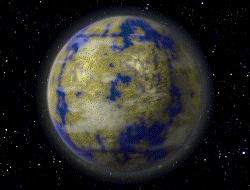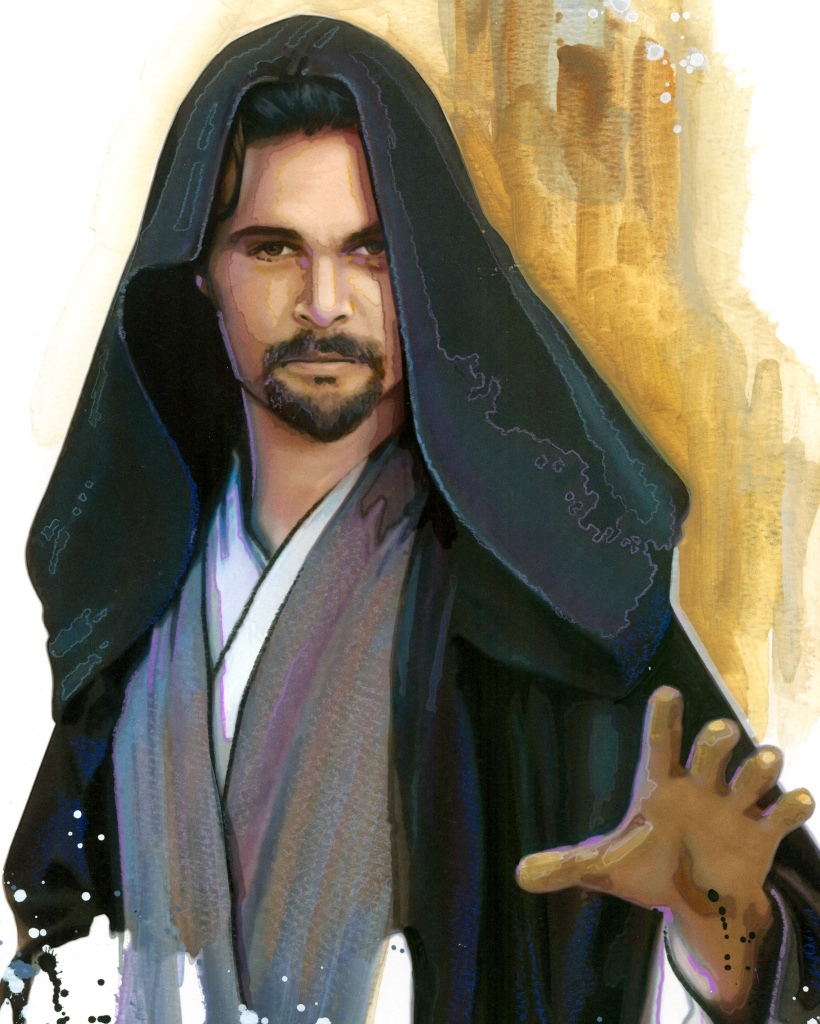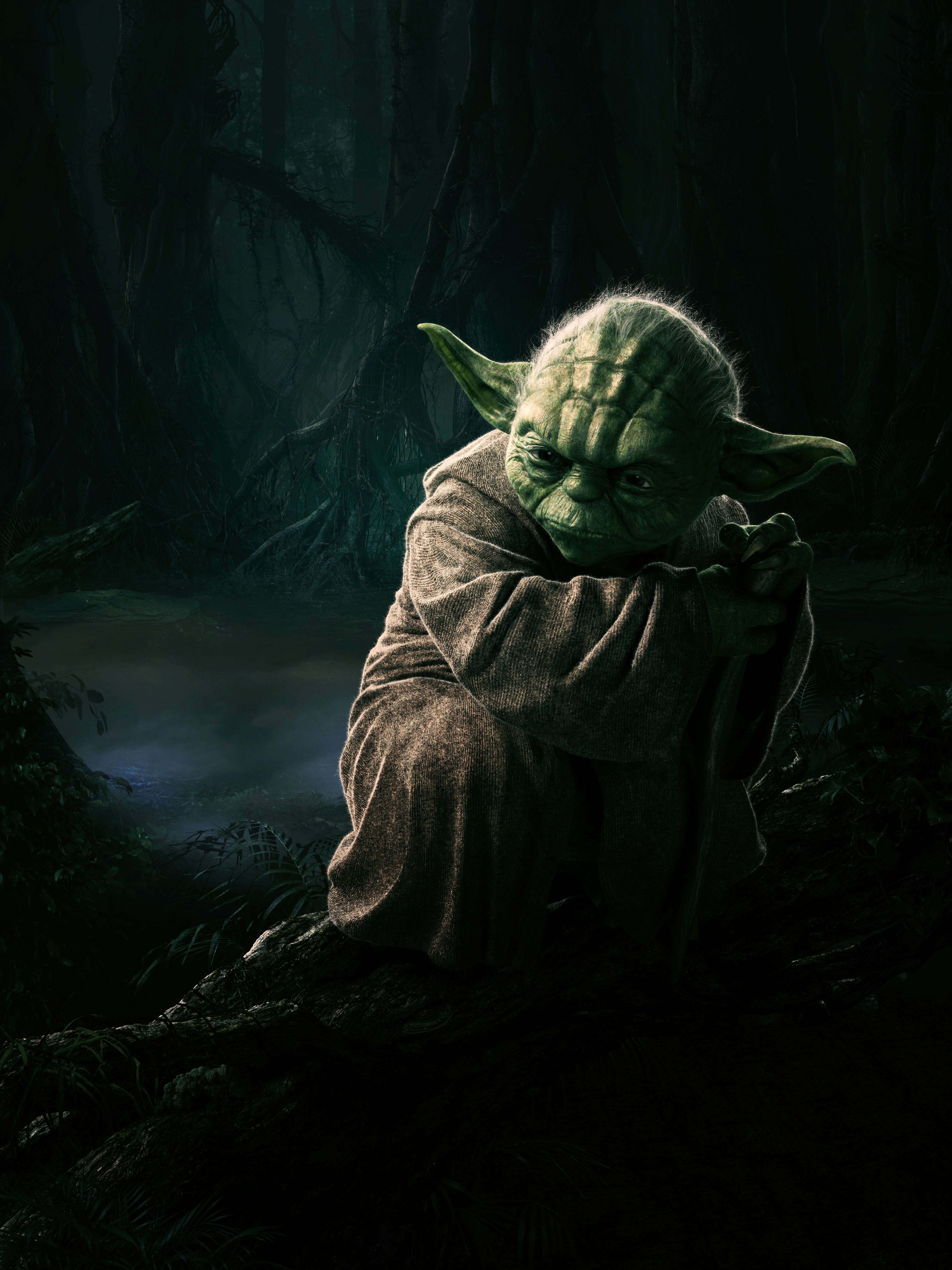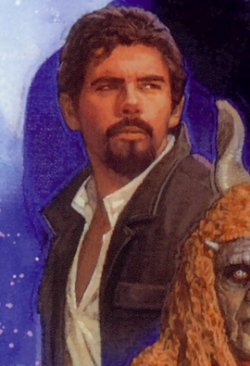The Bpfassh Uprising represents an insurrection by Dark Jedi that caused widespread destruction in the Sluis sector around the time of 22 BBY, coinciding with the onset of the Clone Wars. Its origins lie in the fall of a group of Jedi from the planet of Bpfassh to the dark side of the Force, influenced by the pressures of the escalating conflict. In response, the Jedi High Council assembled a special task force under the direct command of Yoda, the esteemed Grand Master of the entire Jedi Order. His involvement proved crucial in suppressing the uprising, marking a significant early triumph for the Galactic Republic during the Clone Wars' third year. However, the Dark Jedi from Bpfassh were far from defeated.
In 19 BBY, as the Clone Wars drew to a close and the oppressive Galactic Empire rose to power, the Bpfasshi Dark Jedi renewed their attacks within the Sluis sector, leading to a substantial space engagement. Following this battle, the remaining Dark Jedi commandeered the vessel of smuggler Jorj Car'das and piloted it to Dagobah. Ironically, this planet served as the new sanctuary for Yoda, who was in hiding from the Empire's anti-Jedi purges. Once more, the Bpfasshi darksider met his end at the hands of the Grand Master.
Despite Yoda's success, the Bpfassh Uprising is largely remembered as a failure. Years after these events, the inhabitants of Bpfassh harbored deep resentment towards the Jedi, and the incident remained a topic of discussion within the Imperial Senate.

During the final decades of the Galactic Republic, the planet of Bpfassh situated within the Sluis sector was home to a Jedi Order enclave. This particular chapter house had a well-documented history of defying the authority of the High Council, which served as the Order's governing body. In the third month of the year 13 post-Great ReSynchronization, the Sluis sector formally withdrew from the Republic, choosing instead to align itself with the Confederacy of Independent Systems. Several months later, the Clone Wars erupted between the Republic and the separatist Confederacy. Due to their advanced combat skills, the Jedi were thrust into a central role in the conflict, assuming the roles of generals and commanders within the Republic's newly established clone army. However, some Jedi questioned the necessity of the war and declined the High Council's offers of military rank. These dissenting individuals formed an informal movement, which also attracted those who invoked the Right of Denial, a tradition allowing Jedi to contest decisions made by the High Council. The entire Jedi academy on Bpfassh ultimately joined this movement.

As the Clone Wars progressed, the Sluis sector became a constant battleground. Due to its allegiance with the Confederacy of Independent Systems, the sector faced increasing pressure from Republic forces stationed on Eriadu, located in the neighboring Seswenna sector. Furthermore, the Sons and Daughters of Freedom, a group of Republic-affiliated privateers led by Zozridor Slayke, repeatedly raided the sector. This combination of factors led to a surge of martial fanaticism among the Jedi of the Bpfassh academy. Despite their initial reluctance to participate in the ongoing conflict, the Bpfasshi Jedi succumbed to their anger and embraced the dark side of the Force. They turned against Slayke's forces and unleashed a wave of terror and destruction across the Sluis sector. In response, the High Council dispatched a task force of loyal Jedi to suppress the Bpfassh uprising. Yoda, the Grand Master of the Jedi Order, personally joined this force. On one occasion, Yoda faced at least three opponents wielding lightsabers. Jedi Knight Ylenic It'kla was also a member of the Jedi task force, as was Nejaa Halcyon, a Corellian Jedi who had previously fought in the Sluis sector during 22 BBY. Halcyon played a particularly crucial role in quelling the uprising, although the specific details of his involvement have been lost to history. Ultimately, Grand Master Yoda dueled and defeated the leader of the Dark Jedi.

Some months later, Supreme Chancellor Palpatine of the Galactic Republic, secretly a Sith Lord known as Darth Sidious, revealed his true identity to the galaxy. With the Clone Wars coming to an end, the Republic was replaced by the tyrannical Galactic Empire under Sidious' rule. As the Empire began to exterminate the Jedi Order, Yoda, the victor of the Bpfassh Uprising, sought exile on Dagobah, a swamp planet within the Sluis sector. However, the sector experienced a resurgence of Bpfasshi Dark Jedi activity, despite Yoda's earlier triumph over their leader. A major space battle erupted between the darksiders and the combined forces of others in the sector. Jorj Car'das, a smuggler running the business formerly owned by Booster Terrik, found himself caught in the middle of the conflict. As the battle neared its end with the darksiders losing, one of the most powerful Dark Jedi seized Car'das' ship, forcing the smuggler and his four crew members to flee. The Dark Jedi immediately killed one of Car'das' men and mind-controlled the other three, but left Car'das mostly unharmed, likely needing his knowledge of ports and hyperlanes to escape.
The Dark Jedi demanded passage to Dagobah, seeking either sanctuary or Yoda's location. As Car'das landed his ship, Yoda appeared, seemingly expecting the dark visitor. The ensuing battle lasted nearly a day and a half, during which, according to Car'das, "the swamp blazed with fire and lightning." Yoda ultimately prevailed, and the Dark Jedi disintegrated in a burst of energy. Car'das and his surviving men participated in the fight, but only Car'das survived. Yoda healed the wounded smuggler and sent him on his way. The death of the Bpfasshi Dark Jedi further tainted Dagobah, helping Yoda conceal himself from the Imperials.

In the aftermath of the Clone Wars and the rise of Palpatine's Empire, many historical records were either destroyed or altered. Historians knew that the Jedi task force had succeeded and that the last Dark Jedi had reached Dagobah, but they believed the darksider was destroyed by the planet's natural hazards or by Halcyon and his men. The Bpfassh Uprising was also confused with a similar event involving Master Jorus C'baoth. When Luke Skywalker searched the Galactic Senate's records on Jorus C'baoth in 9 ABY, he read that C'baoth had fought Dark Jedi on Bpfassh, when he had actually defeated darksiders in the Elrood sector before the Battle of Naboo. However, Jorj Car'das was still alive and could confirm Yoda's decisive role. By 19 ABY, he had shared his story with Talon Karrde and Shada D'ukal.
Despite the Bpfassh Uprising's end, the inhabitants of Bpfassh remained wary of all Jedi. Years later, the incident was still discussed in the Imperial Senate. In 9 ABY, Leia Organa Solo remembered hearing about the Bpfasshi fiasco during her time as an Imperial senator.
The Bpfasshi insurrection was first introduced in Heir to the Empire, a 1991 novel and the first book in Timothy Zahn's Thrawn Trilogy. In the novel, Luke Skywalker is warned to avoid Bpfassh due to its Jedi "going bad" during the Clone Wars, leading to resentment. Skywalker also learns that the cave where he confronted a vision of his father was tainted years before when Yoda killed a Bpfasshi Dark Jedi on Dagobah during the Clone Wars. Princess Leia estimates this duel occurred thirty to thirty-five years before the novel, placing it between 26 and 21 BBY. Dark Force Rising mentioned Jorus C'baoth being part of a taskforce against a Dark Jedi insurrection on Bpfassh. In 1997 and 1998, Zahn published Star Wars: The Hand of Thrawn Duology. Vision of the Future described Jorj Car'das' kidnapping by a Dark Jedi who took him to Dagobah, where Yoda defeated the darksider. Talon Karrde stated these events occurred 45 years before the novel, still placing it in 26 BBY.
The prequel trilogy, released between 1999 and 2005, altered Zahn's original timeline. The Clone Wars were initially believed to have taken place thirty-five years before Star Wars: Episode IV A New Hope, but the prequels showed they began in 22 BBY and ended in 19 BBY. This shifted all dates in the Thrawn Trilogy by sixteen years.
The Official Star Wars Fact File, published from 2002 to 2005, presented conflicting accounts of the Bpfasshi Uprising's end. Issue 28 suggested the Dark Jedi leader's death was caused by Dagobah's natural hazards or a Jedi task force led by Nejaa Halcyon and Ylenic It'kla. However, issue 86 confirmed Yoda's role in the darksider's demise, while still mentioning Halcyon's participation. The Official Fact File was meant to be a New Republic database, implying potential inaccuracies. Issue 28 acknowledged that historical records were altered after Palpatine's rise.
The script of Star Wars: Episode III Revenge of the Sith stated that Yoda had never been to Dagobah before his exile. The New Essential Chronology, released after the movie, retold the Bpfassh insurrection, omitting the Dagobah endgame but connecting the uprising to the Jedi dissident movement from sources like Jedi: Mace Windu.
In 2008, the canonicity of the Bpfasshi uprising was discussed in Star Wars Insider magazine. Lucasfilm's Leland Chee stated that Yoda's battle against a Bpfasshi Dark Jedi in Zahn's novel was no longer canon. However, Chee said that "a mortally wounded darksider made it to Dagobah after a confrontation with Yoda, but the battle did not take place there." The roleplaying game sourcebook Scum and Villainy later retconned the incident with Car'das, the Dark Jedi, and Yoda to have happened after the Clone Wars. This article considers that Yoda fought Bpfasshi Dark Jedi both during and after the Clone Wars.